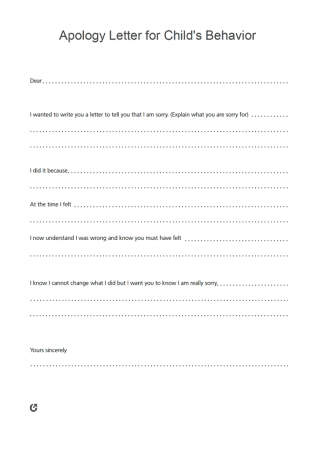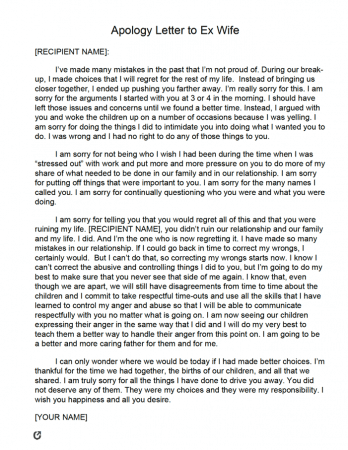
An apology letter is a formal and sincere expression of regret about someone’s mistake. An apology letter can be an email or physical document. People write one for a variety of scenarios. A colleague may apologize for an oversight that caused frustration or delay for another. A friend may apologize for hurting their friend’s feelings. A company may apologize on behalf of an ousted employee. Regardless of the situation, all apology letters share similar qualities: the writer takes responsibility, acknowledges the negative impact of their behavior, and seeks amends.



In any social interaction, there is potential for mistakes and missteps. Someone who has acted irresponsibly or inappropriately may cause another person to feel frustrated, have hurt feelings, or experience setbacks. Here are common types of apology letters.
When writing an apology letter to a professional, such as a principal, the author should appear genuine and recognize the mistake they made. Students often write apology letters to principals after they do something that goes against school policy. For example, the student may have disturbed the classroom, thus preventing students from learning, or they could have skipped class.




Before writing the apology letter, determine the essentials: the act that warrants the apology, the consequences, and the plan to avoid the mistake in the future. This outline is also an excellent organizational structure to follow and will help the writing process.
Begin the letter by stating the specific mistake, oversight, or misunderstanding. A good apology letter gets straight to the point and states clearly the person’s wrongdoing. “Dear Sam, I want to apologize for forgetting to pick you up from the airport on Friday night.”
After admitting the mistake, recognize its impact. “I understand this left you stranded for hours, leading you to use an expensive taxi service and get little sleep that night.” It is also appropriate to express regret or remorse. “I deeply regret that my actions caused a major disruption to your plans.”
Good apology letters are concise, clear, and concrete. While the writer may acknowledge the circumstances surrounding the mistake, they ultimately take responsibility, are genuine in their remorse, and seek to make amends.
Taking responsibility means identifying your mistake without making excuses or over-explaining why you made the choices you did. For example, if you broke your friend’s vase, you might say something like, “I would like to sincerely apologize for breaking your vase as I know that it meant a great deal to you.” You would not say anything along the lines of, “I apologize for breaking your vase, even though I was in a rush and did not see it.” The latter of the two apologies does not sound genuine, or like you are taking personal blame.
Lastly, make sure the letter is also timely as it shows that you are proactive and the apology means something to you. Furthermore, an apology a month or more after an incident may fall flat and be ineffective.
To end on a positive note, suggest ways to act differently in the future. “I hope to keep better track of my calendar and follow through on my commitments.”
If appropriate, making suggestions on how you might change or avoid the mistake in the future tells the person that you have thought about it deeply. In addition, it shows that you are mature and want to change or improve to be a better family member, friend, spouse, employee, boss, or overall person. It is imperative to use the proper wording during this step not to sound arrogant, sarcastic, or condescending. Having another person proofread your letter might give you a second opinion on your tone.
Showing some vulnerability by asking for forgiveness can also be a good move. “I sincerely ask for your forgiveness, but I understand that this may need some time.”
A crucial part of apologizing is admitting that you were in the wrong. By asking for forgiveness, you show the person that you care about your mistake and want to take ownership. You also leave the conversation open-ended, allowing the recipient to consider what they feel comfortable with moving forward. It also shows that you are willing to work with them to create a solution or rebuild the relationship.